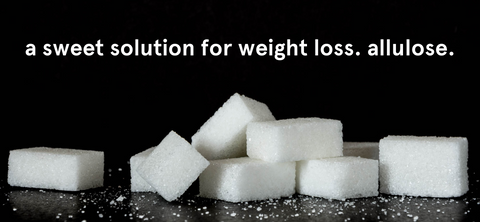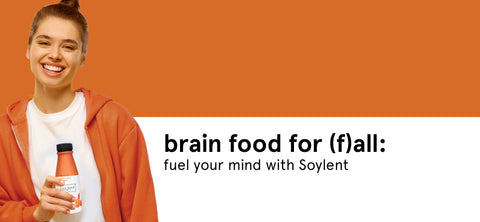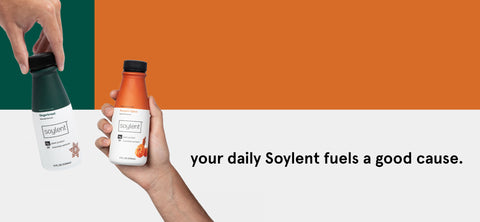
Sticking to a healthy diet is hard for many reasons. And all the information (and misinformation) on the internet doesn’t make it easier!
Should I try Keto? Do I need to be counting every calorie I consume? I keep hearing about intermittent fasting. Should I try paleo?
Nutrition is about more than following the latest trends on your Instagram feed. It's about understanding what your own unique body needs to thrive. There are so many different resources out there claiming to be the best diet for your needs, but the only person who can decide what is right is yourself.
Whether you're just starting to become interested in nutrition or you need a refresher, let's start from the beginning. Grab a snack, a notebook, and a pen—let's get into the basics of nutrition.
Good nutrition is about balance.
Every day, your body needs a healthy balance of three essential macronutrients: carbohydrates, fats, and protein. These make up your daily calorie intake.
The amount of calories you need depends on your weight, metabolism, and genetics. We are all different.
Soylent adopts a scientific approach to providing balanced, complete nutrition. Our first source of inspiration is the Food and Nutrition Board of the Institute of Medicine, National Academy of Sciences.
According to the Institute of Medicine (IOM), a balanced diet provides our source of macronutrient energy within the following ranges:
However, many have criticized IOM recommendations to be too carb-heavy, while many people benefit from consuming lesser amounts of carbs, and selecting those that produce a lower spike in blood sugar, known as “low-glycemic”. The latest scientific evidence supports that a lower carbohydrate intake may be beneficial for some people. Our nutritional philosophy takes the most expert recommendations and balances them more perfectly based on the latest in science:
Millions of people have fueled their days and nights with Soylent—a more balanced ratio of fuel and nutrients, to help you feel better, stay alert, and stay full for longer.
What’s engineered nutrition?
Calculating every single meal can be exhausting. Finding the right balance for every meal can take a toll on your schedule, and in today’s fast-paced world, you probably don’t have the ability to create every single meal with this in mind.
Engineered nutrition encompasses a lot of things, but simply, it is the science-based rational scientific process behind Soylent products. Every ingredient is carefully and purposefully chosen to create a balanced drink or shake that act as a replacement for real food.
With Soylent, the best balance of carbs, protein, and fats is all in one product. Soylent has all the essential nutrients at the amounts recommended by the Institute of Medicine, along with all other current and reliable scientific standards. This creates a more science-based and convenient way to give your body the nutrients it needs.
The combination slow-burning, low-glycemic index (GI) carbs, lean, plant-based protein, healthy fats, and 26 essential vitamins and minerals are designed to help prevent being caught in a “Food Void”. Skipping meals, eating awful foods, or simply just not knowing what to eat is no longer an option.
Because one of our goals is to keep you feeling full so you don’t snack or feel hungry between meals, while providing you with optimal taste, we have included a higher amount of fat in Soylent than some of the other meal-replacement drinks on the market.
Our macronutrient mix (carbs/fat/protein) gives you short-term energy carbs to get you going, and long-term energy fats to keep you going.
What's in food?
Let's start at the core. Here are the main components of food that you should know.
Carbohydrates.
Chances are, you've heard of carbs before.
While they're given a bad name, they are one of the main types of nutrients and play a significant role in the energy your body has throughout the day.
Carbohydrates are found in three main forms in foods: sugars, starches, and fiber. Our diets typically contain a combination of all three, but in forms that spike your blood sugar and slow your metabolism.
Soylent uses a specific set of carbohydrates designed to provide rapid energy and slowly digestible fiber, that together are low glycemic. That is, they don’t spike your blood sugar like most carbs.
Here’s how our low glycemic carbohydrates work to support the body:
Sugars and starches.
The body breaks down all digestible carbohydrates, like starches and many sugars, into glucose (blood sugar). Glucose is used to give the body energy. But too much, and your blood sugar (and metabolism) is thrown into a roller coaster of imbalance
Soylent is optimized for metabolism since it has low glycemic carbs.
One low glycemic carb is a special type of sugar, called isomaltulose, which is found in honey. Isomaltulose is great because your body uses it for energy like other sugars, except for one difference—it does not cause a spike in blood sugar like other sugars.
Soylent also has a highly digestible form of starch called maltodextrin, which is made by cutting the starch molecules from corn into a more digestible carbohydrate. Maltodextrin gives you immediate energy because its chains are shorter than starch.
It’s also about what Soylent does not contain—we don’t add large amounts of cane sugar, fruit sugar or other commonly added sugars that spike your blood sugar and slow your metabolism.
Fiber.
Fiber is one of the most important essential nutrients that most of us don’t get enough of. Fiber is considered a prebiotic—that’s the food that your good gut bacteria prefer to eat! And fiber can help you feel full, often making it easier to resist the urge to overeat.
Because Soylent’s ratio of carbohydrates to fat and protein is a bit lower than many meal replacements, we are providing a better balance of carbs than many meal replacement drinks. While we think carbs are important, we think they should be balanced with lean protein and healthy fat. Everything is good, in balance and moderation.

Protein.
Protein plays a major role in the composition and function of our body. From adolescence to adulthood, protein is needed for proper growth and development. It is needed to build and maintain bone, muscles, and skin. And, protein aid in functions of the body such as immune response, vision, production of hormones, and fluid balance.
Protein-rich foods.
Some of the most common foods that are rich in protein are:
Eggs
Beans, including Soy
Meats
Seafood
Nuts and seeds
High protein foods vary widely in their nutrient content. Meat, eggs, and nuts can include higher levels of fat, including saturated fat and cholesterol. Many plant proteins, such as those from beans, peas or rice may not have all the essential amino acids you need, and can also contain anti-nutritional components that inhibit digestion, like phytates. So, it is important to be mindful of your protein sources.
For a balanced diet, it’s important to get a diversity of high-quality protein sources. Plant-based proteins, especially soy protein, are essential in order to get high-quality lean protein, without a lot of bad fat.
Keeping variety in your protein consumption, and including soy protein, ensures you’re getting enough of what you need while limiting the stuff you should avoid.

Fat.
Everyone has and needs a little fat in their diet. Fat gives your body energy and helps your body absorb vitamins. As you may have gathered from our look into the Western Diet, improving our fat intake is one of our biggest downfalls.
The recommended daily intake for an average person consuming a 2,000 calorie diet is 60 grams of fat. But what kind of fat is it?
Animal fats, which are high in saturated fat and cholesterol, should be limited. Plant fats, such as those from vegetable oils, can be a more healthy alternative to animal fats.
But Soylent goes a step further by limiting saturated fat while adding unsaturated fats that are healthy—such as high-oleic, omega-3 and omega-6 vegetable oils.
Oleic acid is abundant in nature and typically found in most plant and vegetable seed oils. It is a monounsaturated fatty acid or “MUFA”. A large body of scientific evidence supports that dietary monounsaturated fatty acids (MUFA’s), along with polyunsaturated fatty acids (PUFA) and omega-3 fatty acids are associated with better health outcomes.
Soylent is also rich in omega-3 alpha-linolenic acid (ALA), and omega-6 linoleic acid. These PUFA’s are widely considered to be the healthiest fat you can eat.
Meanwhile, the case for diets rich in animal and saturated fats have been decided, in the opposite direction.
Soylent provides a good source of plant-based, healthy fats, so you don’t have to worry about whether what you’re eating is going to clog your arteries.

Of course, there are more to these essential components of food than just what we've described above. Each of these essential nutrients is as complex as the plotline of Stranger Things. Hopefully, these brief descriptions have made things a little bit easier to digest.
References:
https://medlineplus.gov/carbohydrates.html
https://www.accessdata.fda.gov/scripts/InteractiveNutritionFactsLabel/factsheets/Protein.pdf
Myplate.gov - Vary Your Proteine Routine
Institute of Medicine. 2005. Dietary Reference Intakes for Energy, Carbohydrate, Fiber, Fat, Fatty Acids, Cholesterol, Protein, and Amino Acids. Washington, DC: The National Academies Press. https://doi.org/10.17226/10490.







